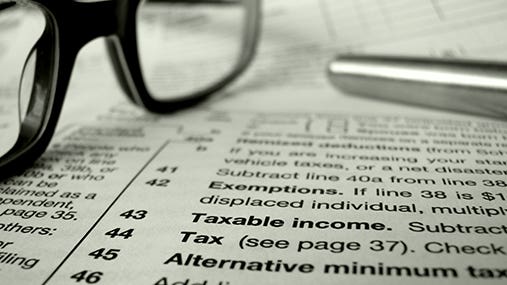State taxes: Ohio


Ohio income tax rates have been gradually falling since 2005. The top rate is 4.997%. More on the Buckeye State’s taxes can be found in the tabbed pages below.
Personal income tax
Ohio collects income taxes from its residents at the following rates:
- 0.495% on the first $5,200 of taxable income.
- 0.990% on taxable income between $5,201 and $10,400.
- 1.980% on taxable income between $10,401 and $15,650.
- 2.476% on taxable income between $15,651 and $20,900.
- 2.969% on taxable income between $20,901 and $41,700.
- 3.465% on taxable income between $41,701 and $83,350.
- 3.960% on taxable income between $83,351 and $104,250.
- 4.597% on taxable income between $104,251 and $208,500.
- 4.997% on taxable income of $208,501 and above.
Ohio state tax returns are due April 15 or the next business day if that date falls on a weekend or holiday.
Several cities also levy municipal income taxes. Forms for these can be found on the Ohio tax website.
Ohio also has a school district income tax — a levy that is separate from federal, state and municipal income taxes. School district income taxes are collected through employer withholding, individual quarterly estimated payments and annual returns. The money is earmarked specifically to support school districts. You can find your school district’s income tax rate using the online search tool. If you lived in a school district that collects an income tax at any time during the tax year, you must file an Ohio Form SD 100.
Sales taxes
The state sales tax rate is 5.75%.
Counties and regional transit authorities also may levy sales and use tax. The taxing jurisdictions may only enact sales tax rate changes effective at the start of any calendar quarter.
Locate the exact sales tax rate for any address in the state with Ohio’s Online Rate Finder.
Personal and real property taxes
Ohio’s tangible personal property tax has been phased out for general business filers. No annual or new taxpayer returns are required to be filed for tax years 2009 and thereafter. The exceptions to the phaseout, which continue to be subject to the tax, are telephone and interexchange telecommunications companies, or entities leasing property to telephone and interexchange telecommunications companies.
The state’s Property Tax Administration Fund was created to cover the costs the Department of Taxation incurs in administering local property tax programs. The fund is used to pay the operating costs of the divisions involved in overseeing real property taxation, administering the personal property taxes of public utilities and intercounty corporations, and expanding audit capacity for personal property taxes.
The real property (real estate) tax is Ohio’s oldest tax. It has been an ad valorem tax, meaning it is based on value, since 1825.
The homestead exemption offers all eligible homeowners the opportunity to exclude up to $25,000 of the market value of their homesteads from property taxation. That means a home valued at $100,000 will generally be taxed as if it were valued at $75,000. Qualifying property owners must apply for the exemption with their county auditor.
Inheritance and estate taxes
Ohio has no inheritance tax.
The Ohio estate tax is no longer in effect for estates of individuals who died on or after Jan. 1, 2013.
Other Ohio tax facts
The Ohio Department of Taxation offers numerous online options to Buckeye State residents, including online filing of state income as well as school district income tax returns.
Ohio taxpayers can go online to check the status of their refunds.
You can let Ohio officials know of any suspected tax fraud at the state’s special Web page.
For more information, contact the Ohio Department of Taxation at (800) 282-1780, or visit its website.
To download tax forms on this site, you will need to install a free copy of Adobe Acrobat Reader. Click here for instructions.




